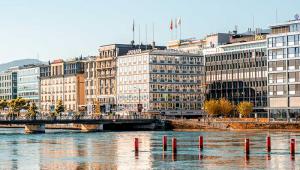In an approximately $95.5trn global market, an estimated $820bn a year worth of public funding is spent by developing countries on procuring goods and services ranging from wiring for electrical grids to welfare programmes. But improved procurement systems could ensure this money is better spent.
Federica Saliola, lead author of the World Bank’s Benchmarking Public Procurement 2016 report, said: “Procurement practices that are transparent and efficient benefit all stakeholders.
“Governments get the best value for money, the private sector thrives and creates jobs, and citizens receive better quality public services. This can help reduce poverty and promote all round prosperity.”
The report assessed the procurement laws and systems in 77 economies. Although higher income countries were found to have a better transparency record, it said there was room for improvement the world over.
Every country surveyed was found to have at least one “transparency deficiency” in their procurement regulations, leaving suppliers in the dark on essential details or hindering equal access to information.
In some cases, legislation did not require the procuring entity to publicly advertise the consultation with the private sector.
Even when legislation was found to be sound, in some cases its implementation lagged behind. For example the law in 32 of the 77 countries surveyed requires suppliers should be paid within 30 days, however this occurs in only 14 of them.
Seventy three of the economies had a dedicated website for public procurement, marking a clear trend towards the use of electronic platforms, although levels of sophistication and the website’s purposes varied, from payment processing and the management of contracts to facilitating online bids and awarding contracts.
The World Bank noted the many benefits of e-procurement, such as enhanced transparency and lower transaction costs, but noted it can also facilitate corruption by reducing the opportunity for personal interactions.
Despite the move towards e-procurement, the report found that transaction costs are still high and are pricing out small and medium-sized enterprises.













